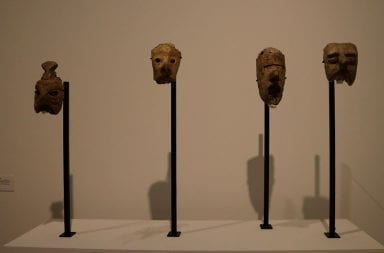The last time the Ohio State men’s tennis team lost a home match, President George W. Bush was serving his first term in office, the average gas price per gallon in Ohio was $1.49 and Mark Zuckerberg was more than six months away from first imagining Facebook in his Harvard dorm room.
The No. 8 Buckeyes (14-2 overall, 1-0 conference) are currently in the midst of a 160-game home win streak, the longest ever recorded in any of the active NCAA Division 1-A sports.
The win streak dates back to April 5, 2003, when the Scarlet and Gray dropped a 5-2 home match against conference rival Illinois. Since then, the Buckeyes have emerged victorious against every team to visit Columbus.
This season, with only four home matches before the team’s historic win streak reaches its 10-year anniversary, players and coaches said they are hoping to get to celebrate the milestone.
“Obviously you want to get to 10 years (without a home loss) because you’re close. When I’m done coaching and the players are done playing, it’s something in your bag of tricks that lots of people don’t have,” said coach Ty Tucker, who has led the Buckeyes since the 1999 season.
Tucker credited the team’s ability to consistently win with a variety of different players as what he is most proud of about the streak.
“The fact that you’ve won the matches is a proud thing, but to be able to do it with so many different parts – in college athletics, every four years you’re with new guys, and you lose guys to graduation, and people coming in and being able to keep the tradition going (is great),” Tucker said.
Tucker also said the strength of schedule during the span of home matches has made the win streak even more memorable.
“It’s not like we’ve been playing a ton of easy matches. We play some good teams at home and have beaten many top 10 teams at home during the win streak, so that’s pretty pleasing to me,” he said.
Some members of the team said that the win streak has drastically improved the playing environment of matches that take place in Columbus.
“When I first got here, we didn’t have that good of crowds, but now we’re getting 300 to 400 people a match, which for college tennis is huge,” said redshirt senior Devin McCarthy. “When we play on the road, for instance at Penn State, they maybe had 20 people at a match. When we come out here and we have a home crowd and you win a big point, it’s not just your teammates – you’ve a got a whole crowd cheering for you. It’s a really big difference.”
In addition to improving home attendance, redshirt junior Peter Kobelt said the streak carries a strong “intimidation” factor.
“It’s a little bit of intimidation right from the beginning – other teams not believing they can beat us (at home) because of our success here. It’s definitely a confidence booster because we practice (in Columbus) every day and we’re really comfortable in this building, and we expect to play well when we’re here,” Kobelt said.
Kobelt also said the intimidation factor brought on by the streak will benefit OSU when the Big Ten Championships are played in Columbus in April.
“I think we are going to try and get a really big crowd out (to the tournament) and recognize the streak that Ty (Tucker) has put together,” he said.
Tucker and his squad, who try not to acknowledge the streak often, admit that keeping the looming number off of their minds is not always easy.
“We don’t talk about it that much, because obviously we don’t want to jinx it. But in the back of our heads, I think everyone knows that we don’t want to be the team that loses it,” McCarthy said.
Younger players such as redshirt sophomore Hunter Callahan are especially eager to defend the win streak and attempt to graduate without suffering a home loss.
“It’s definitely a big factor in our practice, because we want to practice hard to keep the streak alive,” Callahan said.
If the Buckeyes hope to reach a 164-game win streak and 10 years unbeaten at home, they will have to secure key victories at home against Louisville, Purdue, Indiana and Wisconsin.
Ultimately, Tucker said he would mostly remember the people that contributed to the program’s success and not just a number in a record book.
“What’s special is good assistant coaches and very good tennis players,” he said. “Guys that have bought into the fact that you can’t take anything for granted.”


